
Christoph Martin Wieland was a German poet and writer. He is best-remembered for having written the first Bildungsroman, as well as the epic Oberon, which formed the basis for Carl Maria von Weber's opera of the same name. His thought was representative of the cosmopolitanism of the German Enlightenment, exemplified in his remark: "Only a true cosmopolitan can be a good citizen."

Johann Philipp Carl Joseph Stadion, Count von Warthausen was a statesman, foreign minister, and diplomat who served the Habsburg empire during the Napoleonic Wars. He was also founder of Austria's central bank Oesterreichische Nationalbank. He was Count of Stadion-Warthausen from 1787 to 1806.

The House of Schönborn is the name of an ancient noble and mediatised formerly sovereign family of the former Holy Roman Empire.

Schemmerhofen is a municipality ("Gemeinde") in the district ("Landkreis") of Biberach in Baden-Württemberg, Germany. Schemmerhofen is located in the Upper Swabia region of Baden-Württemberg.

Imperial Count Heinrich von Bünau was a politician and historian from the Electorate of Saxony, now part of Germany.
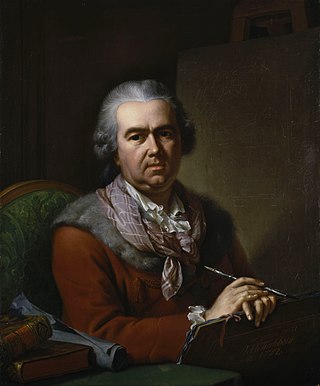
Johann Heinrich Tischbeinthe Elder, known as the Kasseler Tischbein, was one of the most respected European painters in the 18th century and an important member of the Tischbein family of German painters, which spanned three generations.

The House of Liechtenstein, from which the principality takes its name, is the family which reigns by hereditary right over the principality of Liechtenstein. Only dynastic members of the family are eligible to inherit the throne. The dynasty's membership, rights and responsibilities are defined by a law of the family, which is enforced by the reigning prince and may be altered by vote among the family's dynasts, but which may not be altered by the Government or Parliament of Liechtenstein.

Warthausen is a municipality in the district of Biberach in Baden-Württemberg in Germany and birthplace of Friedrich Karl von Koenig-Warthausen. Included among its neighbourhoods is Oberhöfen, which hosts the Dorfplatz Feschd every year.

Georg Albrecht of Saxe-Weissenfels, Count of Barby, was a German prince of the House of Wettin and the last count of Barby.

Marie Sophie von La Roche was a German novelist. She is considered the first financially independent female professional writer in Germany.

Ferdinand Jagemann was a German painter; known primarily for his portraits.

Georg Melchior Kraus was a German painter. He was a co-founder of the Weimar Princely Free Drawing School, together with Friedrich Justin Bertuch, in 1776.
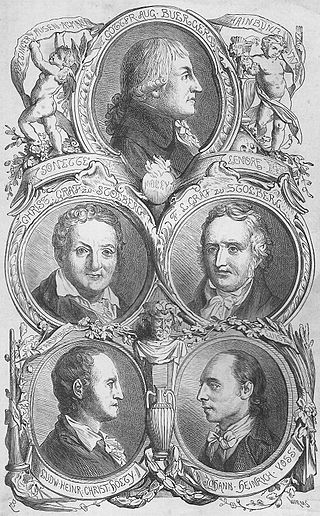
The Göttinger Hainbund was a German literary group in the late 18th century, nature-loving and classified as part of the Sturm und Drang movement.
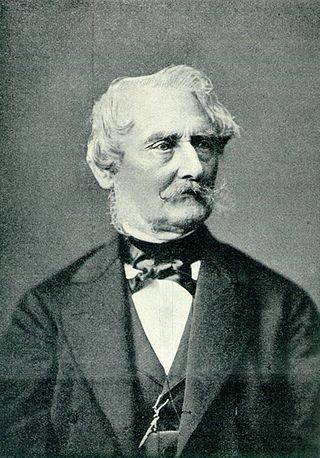
Johann Heinrich Strack was a German architect of the Schinkelschule. His notable works include the Berlin Victory Column.

Classical Weimar is a UNESCO World Heritage Site consisting of 11 sites located in and around the city of Weimar, Germany. The site was inscribed on 2 December 1998. The properties all bear testimony to the influence of Weimar as a cultural centre of the Enlightenment during the eighteenth and early nineteenth centuries. A number of notable writers and philosophers lived in Weimar between 1772 and 1805, including Johann Wolfgang von Goethe, Johann Gottfried Herder, Friedrich Schiller, and Christoph Martin Wieland. These figures ushered in and participated in the Weimar Classicism movement, and the architecture of the sites across the city reflects the rapid cultural development of the Classical Weimar era.

Schloss Weimar is a Schloss (palace) in Weimar, Thuringia, Germany. It is now called Stadtschloss to distinguish it from other palaces in and around Weimar. It was the residence of the dukes of Saxe-Weimar and Eisenach, and has also been called Residenzschloss. Names in English include Palace at Weimar, Grand Ducal Palace, City Palace and City Castle. The building is located at the north end of the town's park along the Ilm river, Park an der Ilm. It forms part of the World Heritage Site "Classical Weimar", along with other sites associated with Weimar's importance as a cultural hub during the late 18th and 19th centuries.
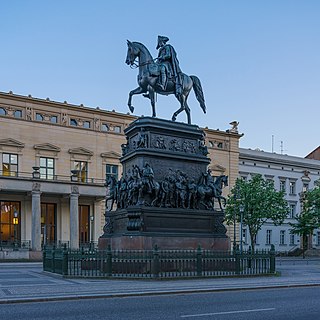
The equestrian statue of Frederick the Great on Unter den Linden avenue in Berlin's Mitte district commemorates King Frederick II of Prussia. Created from 1839 to 1851 by Christian Daniel Rauch, it is a masterpiece of the Berlin school of sculpture, marking the transition from neoclassicism to realism. The bronze statue shows "The Old Fritz" dressed in military uniform, ermine coat and tricorne hat on horseback above the leading generals, statesmen, artists and scientist of his time. Walled in during World War II, it was disassembled by East Germany in 1950, reassembled in Sanssouci Park in 1963, and returned to its original location in 1980.

Anton Wilhelm Tischbein, known as the Hanauer Tischbein was a German painter from the Tischbein family of artists.
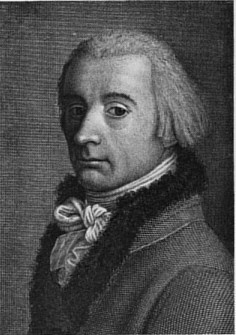
Johann Heinrich Lips was a Swiss copper engraver; mostly of portraits.





















